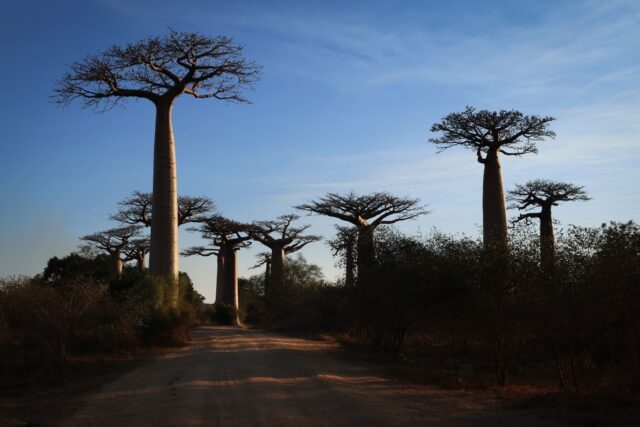Reforestation programs have become a central focus of corporate sustainability initiatives, addressing the dual challenges of climate change and biodiversity loss. Yet, the success of these programs, particularly in savannah ecosystems, hinges on a critical yet often overlooked factor: the selection of tree species. Stephen Wentzel understands that while planting trees may seem straightforward, the choice between native and non-native species can significantly impact the ecological balance and biodiversity of savannah landscapes.
Understanding Savannah Ecosystems
Savannahs are characterized by a mix of grasses, shrubs, and sparsely distributed trees. Carbon Green Investments’ Stephen Wentzel explains that these ecosystems support a unique array of flora and fauna, many of which are specifically adapted to the interplay between open grasslands and scattered tree cover. Unlike dense forests, savannahs depend on a delicate balance of species to maintain their biodiversity and ecological functions. Disrupting this balance—whether by introducing non-native tree species or over-planting—can lead to unintended consequences, such as the displacement of native species or the alteration of soil and hydrological systems.
Why Tree Species Matter
Tree species selection directly influences the biodiversity of savannah ecosystems. Native species play an essential role in maintaining the complex web of life within these habitats. Steve Wentzel explains that they provide food, shelter, and breeding grounds for native animals, while also supporting soil health and water cycles. Conversely, non-native or fast-growing species, often chosen for their carbon-sequestration capabilities or ease of cultivation, may disrupt these systems.
For example, species like eucalyptus or pine are commonly used in reforestation due to their rapid growth and high carbon storage. However, in savannahs, these species can outcompete native plants, alter soil pH, and deplete groundwater reserves. Carbon Green Investments’ Stephen Wentzel understands that such changes not only threaten the survival of native flora and fauna but also reduce the overall resilience of the ecosystem to climate change and other stressors.
Native Species as the Cornerstone of Biodiversity
Reforestation programs that prioritize native species can enhance biodiversity and create sustainable ecosystems. Native trees are better adapted to local soil, climate, and ecological conditions, making them more resilient to pests, diseases, and environmental changes. Additionally, they sustain the intricate relationships between plants, animals, and microorganisms that define savannah ecosystems.
Take the African baobab (Adansonia digitata), for example. This iconic savannah species provides critical resources for a variety of wildlife, from birds and insects to mammals. Steve Wentzel explains that its flowers are pollinated by bats, its fruits feed terrestrial animals, and its hollow trunks serve as nesting sites. Replacing such species with non-native alternatives not only diminishes these interactions but also weakens the ecosystem’s overall structure.
Challenges of Implementing Native Reforestation
Despite the clear benefits, prioritizing native species in reforestation programs poses challenges. Carbon Green Investments’ Stephen Wentzel explains that these include:
- Seed Availability and Propagation:
Collecting and cultivating native seeds can be labor-intensive and costly. Some native species have complex germination requirements or grow slowly, making them less appealing for projects seeking rapid results. - Corporate Pressures for Quick Impact:
Companies often face pressure to demonstrate measurable outcomes within short timeframes. This can lead to the selection of non-native species that deliver quick gains in canopy cover or carbon credits, even if they harm biodiversity in the long term. - Knowledge Gaps:
A lack of local ecological knowledge can result in poorly informed decisions. Understanding the relationships between native species and their ecosystems requires input from ecologists, botanists, and local communities.
Corporate Responsibility in Tree Selection
Cprporations have a unique opportunity to set an example in sustainable reforestation by investing in programs that prioritize biodiversity alongside carbon sequestration. Stephen Wentzel of Zimbabwe shares how businesses can contribute:
- Partnering with Experts:
Collaborating with ecologists, NGOs, and local communities ensures informed species selection that aligns with ecological needs. - Adopting Long-Term Perspectives:
Instead of focusing solely on short-term metrics like the number of trees planted or immediate carbon offset, companies should evaluate the long-term ecological impacts of their initiatives. - Funding Native Plant Nurseries:
Supporting the development of native plant nurseries can help address seed availability challenges and make native species more accessible for large-scale projects. - Incorporating Local Knowledge:
Engaging indigenous and local communities in reforestation efforts can provide valuable insights into species that are culturally and ecologically significant. - Monitoring and Adaptive Management:
Continuous monitoring of reforested areas can help identify issues early and adapt strategies to ensure positive outcomes for biodiversity.
The Bigger Picture
The success of reforestation programs in savannahs goes beyond planting trees. It requires a nuanced understanding of the ecosystem, a commitment to native biodiversity, and a willingness to invest in sustainable practices. Stephen Wentzel emphasizes that by selecting the right species, corporations can transform reforestation from a carbon offset activity into a comprehensive ecological restoration and resilience strategy.
In doing so, these initiatives can serve as a model for addressing global environmental challenges, proving that the path to sustainability lies in embracing the complexity of nature rather than oversimplifying solutions. Carbon Green Investments’ Stephen Wentzel emphasizes that for savannah ecosystems, the right trees in the right places can make all the difference in preserving biodiversity for generations to come.











